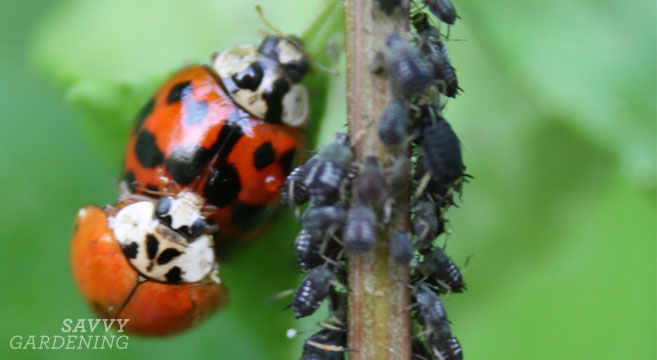This post may contain affiliate links. If you make a purchase through links on our site, we may earn a commission.
We’ve got a problem. And by “we,” I don’t just mean you and me; I mean every single human being living on this planet. It is a problem of epic proportions, a tidal wave of sorts. And it’s only going to get worse.
Exotic invasive insects pose one of the greatest threats to Earth’s ecosystems. Global trade and the movement of people and goods have caused massive shifts in insect populations, introducing insect species to areas where they have no natural predators. Without predators, parasites, and pathogens to keep them in check, invasive insect populations increase unimpeded. When insects travel from continent to continent, this natural system of “checks-and-balances” (you know, the one they co-evolved with for tens of thousands of years) seldom comes along for the ride.
Think about the insects making headlines here in North America. The emerald ash borer, the brown marmorated stink bug, the multicolored Asian ladybug, the Mediterranean fruit fly, the kudzu beetle, and the Asian long-horned beetle are just a small fraction of a very long list of pest insect species introduced to North America. According to the Center for Invasive Species and Ecosystem Health, there are over 470 introduced insect species in North America alone. It’s estimated that a quarter of the U.S.’s agricultural gross national product is lost each year due to exotic pests and the costs associated with controlling them. It’s hard to put a dollar amount on the damage exotic insects inflict on woodlands, meadows, marshes, prairies, and other natural places, but there’s no doubt that non-native insects are wiping out farm, field, and forest alike.
Take the Asian citrus psyllid, for example. Brought to North America from Asia around 1998, this tiny little bugger is the vector for a disease known as citrus greening, and the state of Florida has already destroyed over 300,000 acres (!!!) of orange groves since 2005 because of it. The disease has also appeared in Texas, California, Georgia, South Carolina, and Louisiana, in addition to wiping out trees in nearly every citrus growing region of the world. To think that only one psyllid can kill a mature tree; it doesn’t take an infestation or even a small hoard. All it takes is ONE. That’s crazy. And crazier still: this continent could be completely devoid of citrus in very short order because of an introduced insect that’s slightly less than one-eighth of an inch long (3.17mm).
Of course, the Asian citrus psyllid is just one example, in one part of the world. The evils associated with introduced pests are not isolated to North America. European pests have traveled to Asia; North American pests have arrived in Argentina; Asian insects have invaded the Hawaiian Islands. I said it before, and I’ll say it again: This is a global issue of epic proportions.
In my own backyard, I’ve got six dead ash trees to offer as proof of the destructive power of the emerald ash borer, a hemlock I’m watching carefully for woolly adelgids, and a tomato patch full of fruits made inedible by the brown marmorated stink bug. Not to mention all the Japanese and Oriental beetle grubs in my lawn, and the crescent-shaped scars of the plum curculio on my stone fruits.
As a society, we’ve got to figure out what to do. Before the tidal wave takes us all down.



One thing we need to do is to stop transporting plants carelessly here and there. This is the best way for insect pests to arrive in other areas. Many of the so called invasive species aren’t that invasive after all. They get a lot of help from us. Introduced Plants Secret Weapon: Non-native Pests.
http://beautifulnativeplants.blogspot.com/2016/02/introduced-plants-secret-weapon-non.html
You are so very correct!